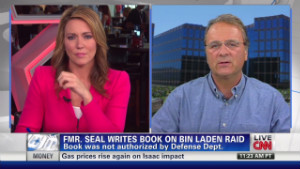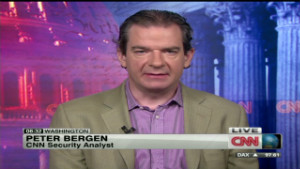(CNN) -- The much-anticipated memoir of a Navy SEAL who helped kill Osama bin Laden hits bookshelves Tuesday to an eager audience whose pre-orders have already put the book at No. 1 on Amazon's bestseller list for two weeks.
But there is one group who may
not be as eager to see the release of "No Easy Day: The Firsthand Account of the
Mission That Killed Osama Bin Laden."
The Pentagon.
Last week, the Pentagon general
counsel threatened legal action against the former Navy SEAL who wrote the
revealing book.
In a letter addressed to "Mark
Owen," the pen name of book's author Matt Bissonnette, General Counsel Jeh
Charles Johnson alleged the writer violated secrecy agreements and broke federal
law.
"In the judgment of the
Department of Defense, you are in material breach and violation of the
nondisclosure agreements you signed. Further public dissemination of your book
will aggravate your breach and violation of your agreements," Johnson wrote.
Bissonnette's lawyer, responded in a letter last week saying the author "sought
legal advice about his responsibilities before agreeing to publish his book and
scrupulously reviewed the work to ensure that it did not disclose any material
that would breach his agreements or put his former comrades at risk."
It is unclear how the Defense
Department will proceed or if Tuesday's release will launch a court battle.
The controversy has not
extinguished the hot demand for the memoir.
Publisher Dutton had originally
planned to release 300,000 copies, but after fevered hype, it increased the
number to 575,000, according to Publisher's Weekly.
In the 336-page book,
Bissonnette wrote about his concerns that bin Laden would put up a fight, after
the SEALs' helicopter crashed near bin Laden's compound.
"Roughly 15 minutes had passed
and bin Laden had plenty of time to strap on a suicide vest or simply get his
gun," he says in the book.
Bin Laden was not wearing a vest
when he died. His two guns, according to Bissonnette, were on a shelf in his
bedroom, apparently untouched.
After the helicopter crash and a
hard fight to get through the compound's defenses, Bissonnette and several other
SEALS were near the top floor of the compound, where intelligence predicted bin
Laden would be.
"We were less than five steps
from getting to the top when I heard suppressed shots. BOP. BOP.
"The point man had seen a man
peeking out of the door on the right side of the hallway about 10 feet in front
of him. I couldn't tell from my position if the rounds hit the target or not.
The man disappeared into the dark room."
The man who peeked out the door
had been shot, but was still moving when the SEALs entered the room. Bissonnette
described the end.
"In his death throes, he was
still twitching and convulsing. Another assaulter and I trained our lasers on
his chest and fired several rounds. The bullets tore into him, slamming his body
into the floor until he was motionless."
But there was still the question
of whom they had killed. One of Bissonnette's roles was photographing the
body.
"It was strange to see such an
infamous face up close. Lying in front of me was the reason we had been fighting
for the last decade. It was surreal trying to clean blood off the most wanted
man in the world so that I could shoot his photo. I had to focus on the mission,
right now we needed some good quality photos."
Bissonnette said he had mixed
feelings about President Barack Obama, who ordered the operation.
"None of us were huge fans of
Obama. We respected him as the commander-in-chief of the military and for giving
us the green light on the mission," wrote the former SEAL, who was a 36-year-old
chief petty officer when he left the Navy as a highly decorated commando in
April.





No comments:
Post a Comment